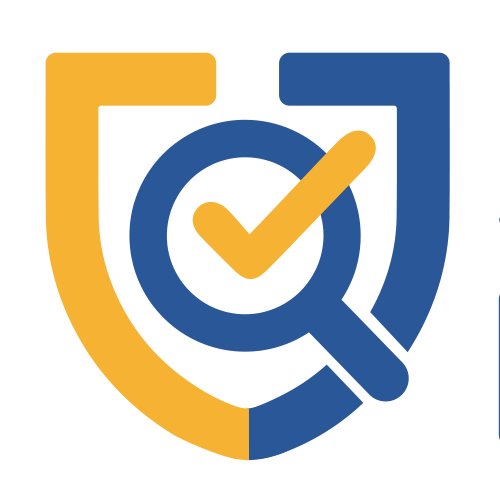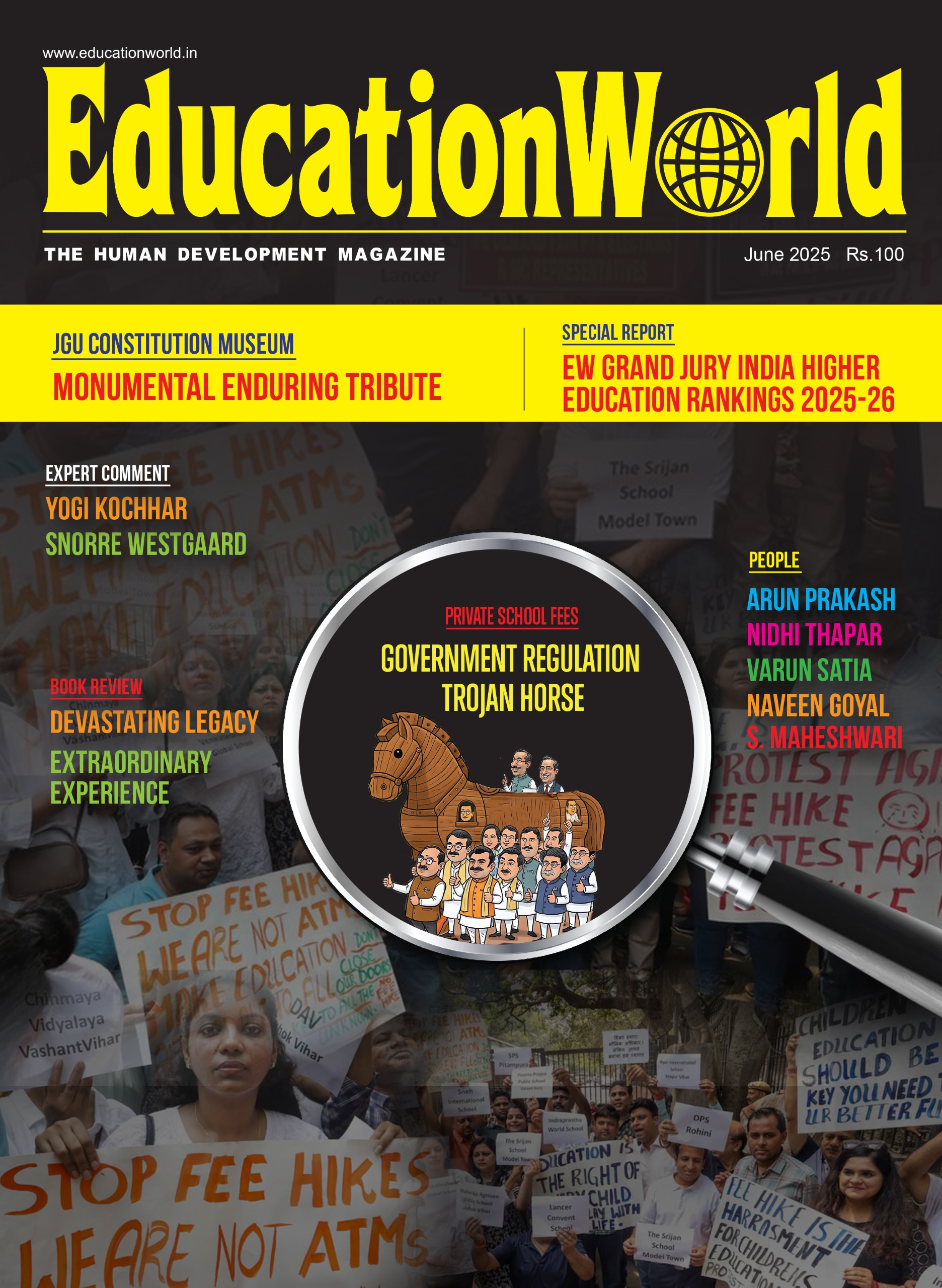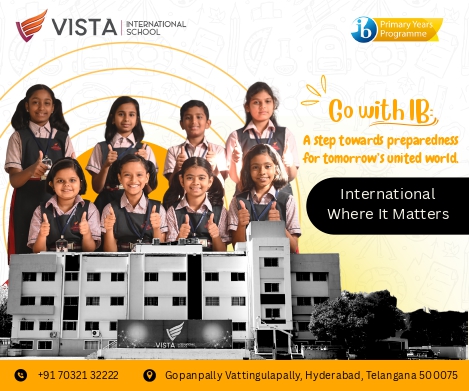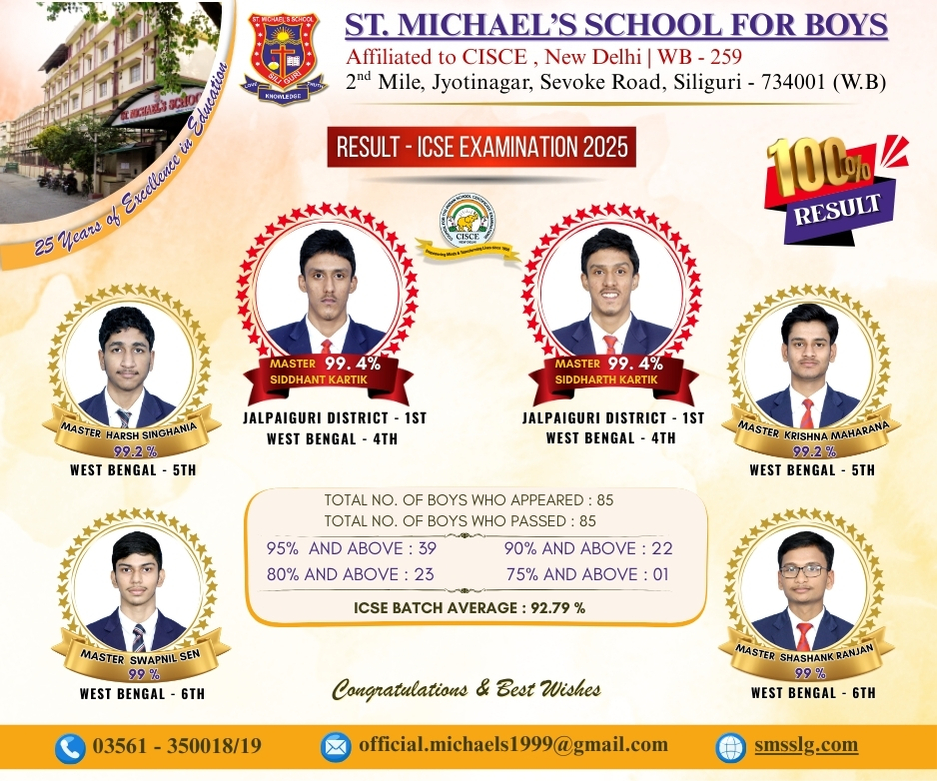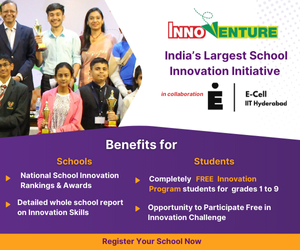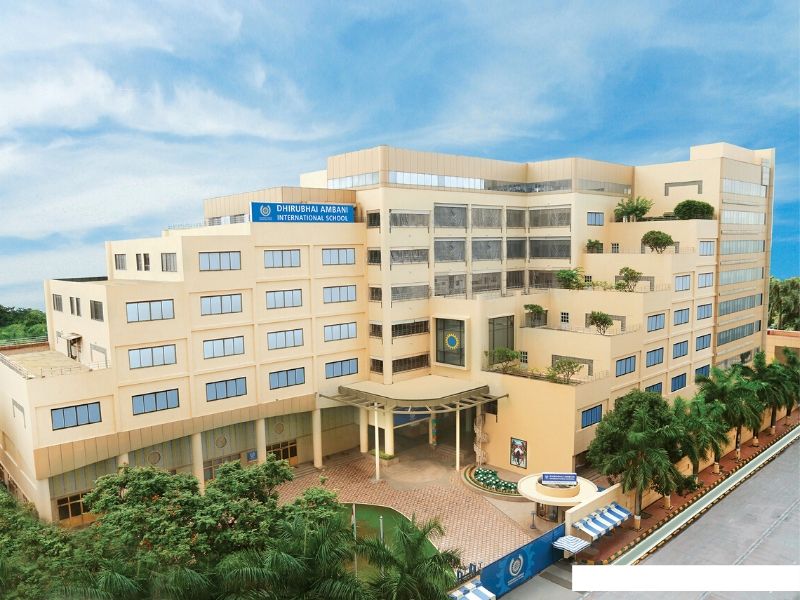In this General Election-eve story, we assess the track record of the Modi government — the first non-Congress government to have completed ten years in office in independent India — in early childhood, primary-secondary, skilling and higher education writes Summiya Yasmeen
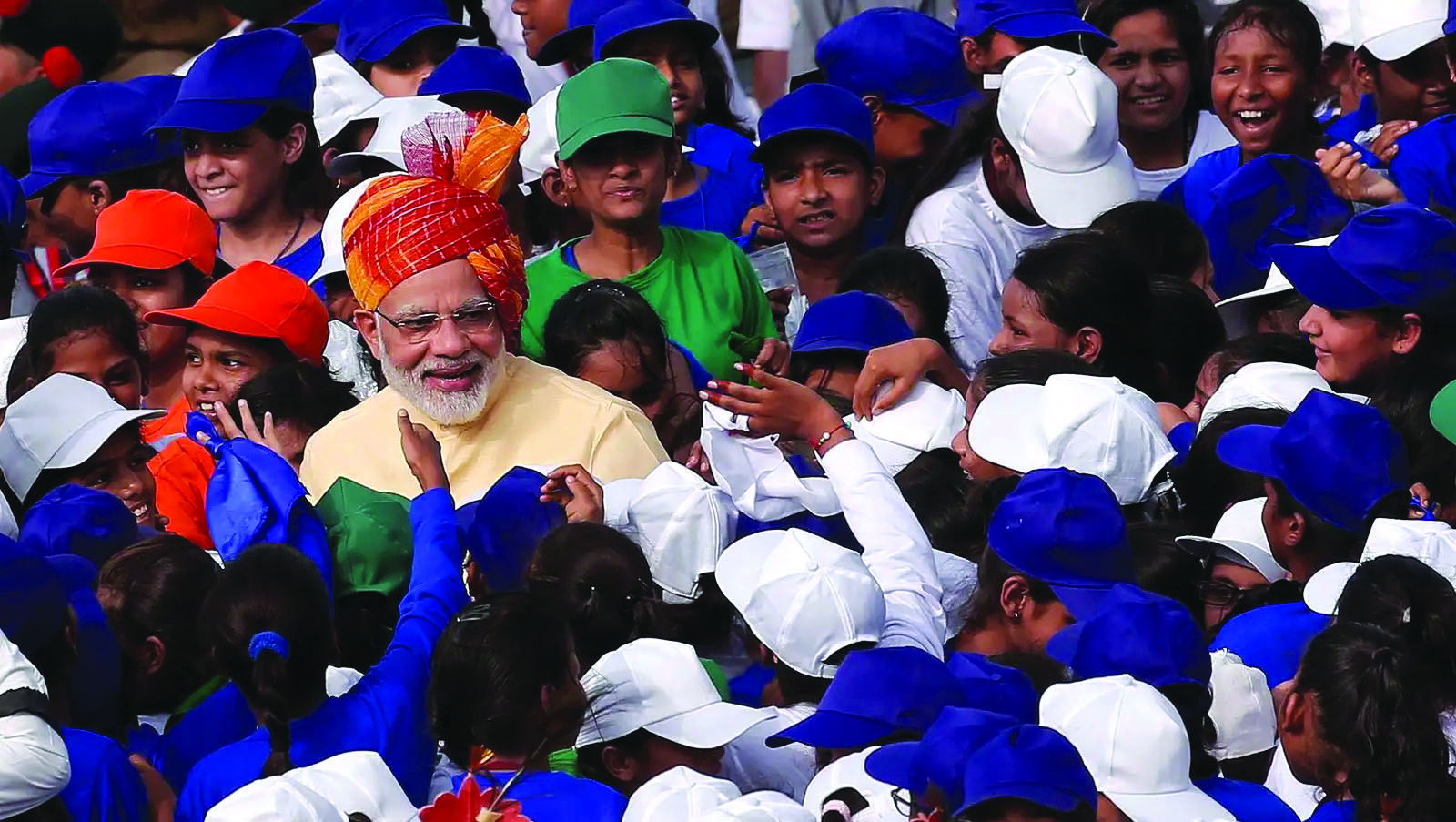
Prime Minister Narendra Modi: eventful decade for Indian education
There’s no shortage of report cards being produced by think tanks, media publications, opposition parties and government agencies on the occasion of the BJP government at the Centre having completed ten years in office (2014-2024). Undoubtedly, this is a landmark milestone as the government led by popular prime minister Narendra Modi becomes independent India’s first non-Congress government to complete two consecutive five-year terms in New Delhi.
As the nation readies for the 18th General Election scheduled to be held in April-May, in his round of election speeches the prime minister has awarded his government full marks for ending the “demon of corruption” and “unblemished governance”, economic progress, maintenance of law and order and “Modi ki Guarantee” welfare schemes.
Likewise, other top BJP leaders have acclaimed the past decade as “transformational” for the country. On February 9, Union finance minister Nirmala Sitharaman presented a White Paper on the economy contrasting ten years of “misgovernance” by the Congress-led UPA government (2004-2014) with a decade of BJP rule during which the Indian economy has been “put back on the rails”. Unsurprisingly, report cards from opposition parties contradict these assertions. The opposition Congress has presented a detailed ‘Black Paper’ on failures of the BJP government highlighting growing unemployment, inflation, “danger to democracy” and “authoritarian rule”.
Yet, this flurry of report cards evaluating the Modi government’s ten-year term are focused on the economy, national security, foreign policy and unemployment. A subject unmarked and conspicuous by its absence is education, aka human resource development — the foundation of a prosperous economy and nation. In this special election-eve cover story, EducationWorld (estb.1999) sets this glaring omission right with a comprehensive Education Report Card of the Narendra Modi government.
Incontrovertibly the past decade has been eventful for Indian education. While the BJP government’s first term (2014-2019) was marked by several controversies such as assault on the autonomy of India’s showpiece IIMs by then Union education minister Smriti Irani and rejection of the T.S.R. Subramanian Committee’s National Education Policy Report 2016, in the second term (2019-24), the pace of reform gathered momentum. In its 2014 election manifesto, the BJP’s big promise was that it would frame a new National Education Policy to usher in sweeping reforms from early childhood to higher education.
After it won General Election 2014 with a huge margin, the BJP government immediately set to work to deliver this promise and constituted a National Education Policy (NEP) drafting committee under the chairmanship of former Union cabinet secretary T.S.R. Subramanian. However the Subramaniam Committee report, submitted in 2016, was rejected for mysterious reasons. Another NEP Draft Committee was constituted under the leadership of space scientist Dr. K. Kasturirangan (KR) which submitted a detailed 484-page report on May 31, 2019 to the BJP government, after it began its second term in office at the Centre.
A year later, NEP 2020, based on the KR report, was presented to the nation. The 66-page NEP 2020, formulated after an interregnum of 34 years, has been widely welcomed. It accords high priority to early childhood education; mandates holistic school education with compulsory vocational learning; exam reforms to test children’s conceptual comprehension and critical thinking capabilities rather than memory; certified multiple exit and re-entry options and a transferable credits system in higher education; phasing out the currently obligatory affiliation system for undergrad colleges and graded autonomy for undergrad colleges under a ‘light but tight’ regulatory framework. Moreover, NEP 2020 promises a National Research Foundation and a green light for top-ranked foreign universities to establish owned campuses in India.
The Covid-19 pandemic which shuttered all education institutions for over 80 weeks, slowed the implementation of NEP 2020. But since 2021, the BJP government at the Centre has actioned several initiatives including the National Curriculum Framework (NCF) for Foundational Stage 2022 and NCF for School Education 2023 — two of the four curriculum frameworks recommended by the Kasturirangan Committee and incorporated into NEP 2020. The other two — NCF for Teacher Education and NCF for Adult Education — are expected to be announced soon.
Dipstick survey
EW conducted a dipstick survey among selected K-12 and higher education leaders asking them to rate the record of the BJP government during the past decade in critical education sectors and issues on a 10-point scale. Their feedback:
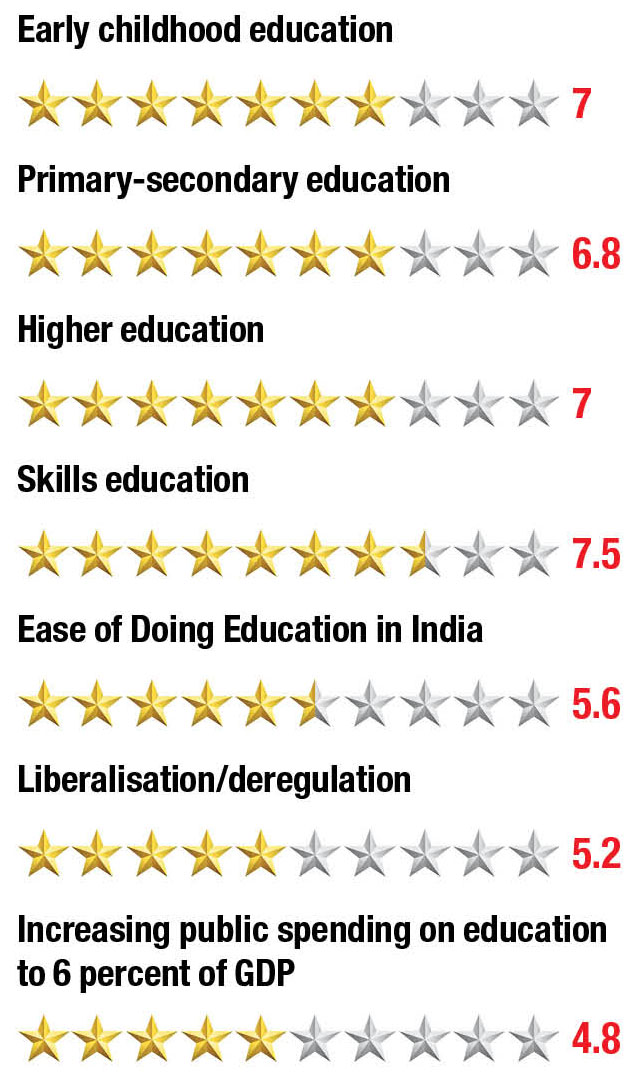 “The biggest positive of the past decade is that education received high national visibility, whether it’s through rolling out of a new National Education Policy after 34 years, or initiatives such as the Pariksha Pe Charcha programme chaired by PM Modi himself. I give the government full marks for keeping education in the news and limelight,” says Prof. Rishikesh B.S, head of the Hub for Education, Law and Policy at Azim Premji University, Bengaluru.
“The biggest positive of the past decade is that education received high national visibility, whether it’s through rolling out of a new National Education Policy after 34 years, or initiatives such as the Pariksha Pe Charcha programme chaired by PM Modi himself. I give the government full marks for keeping education in the news and limelight,” says Prof. Rishikesh B.S, head of the Hub for Education, Law and Policy at Azim Premji University, Bengaluru.
According to Rishikesh, major achievements of the BJP government are NEP 2020 and subsequent National Curriculum Frameworks for the Foundational Stage (NCF-FS) and School Education (NCF-SE). “NEP 2020 was drafted after an extraordinarily participative and collaborative process led by a committee chaired by Dr. Kasturirangan. The government needs to be credited for incorporating most of the committee’s suggestions in the final NEP 2020. Subsequently, once NEP 2020 was approved the government has quickly acted to implement some of the provisions such as developing the curriculum frameworks. For the first time, NCF-FS which accords high importance to early childhood education was quickly followed by NCF-SE last year. However, while it gets full marks for efficient and detailed education policy formulation, the government hasn’t increased the budgetary allocation required to implement NEP 2020. Nor has it fast-tracked the regulatory reforms needed, particularly to confer greater autonomy to private and public higher education institutions. I hope the next government at the Centre ensures that education gets the appropriate funding needed to implement NEP 2020, and the implementation is done in its true spirit,” says Prof. Rishikesh.
In the next few pages, we assess the track record of the Modi government over the past decade in early childhood, school, higher and skills education.
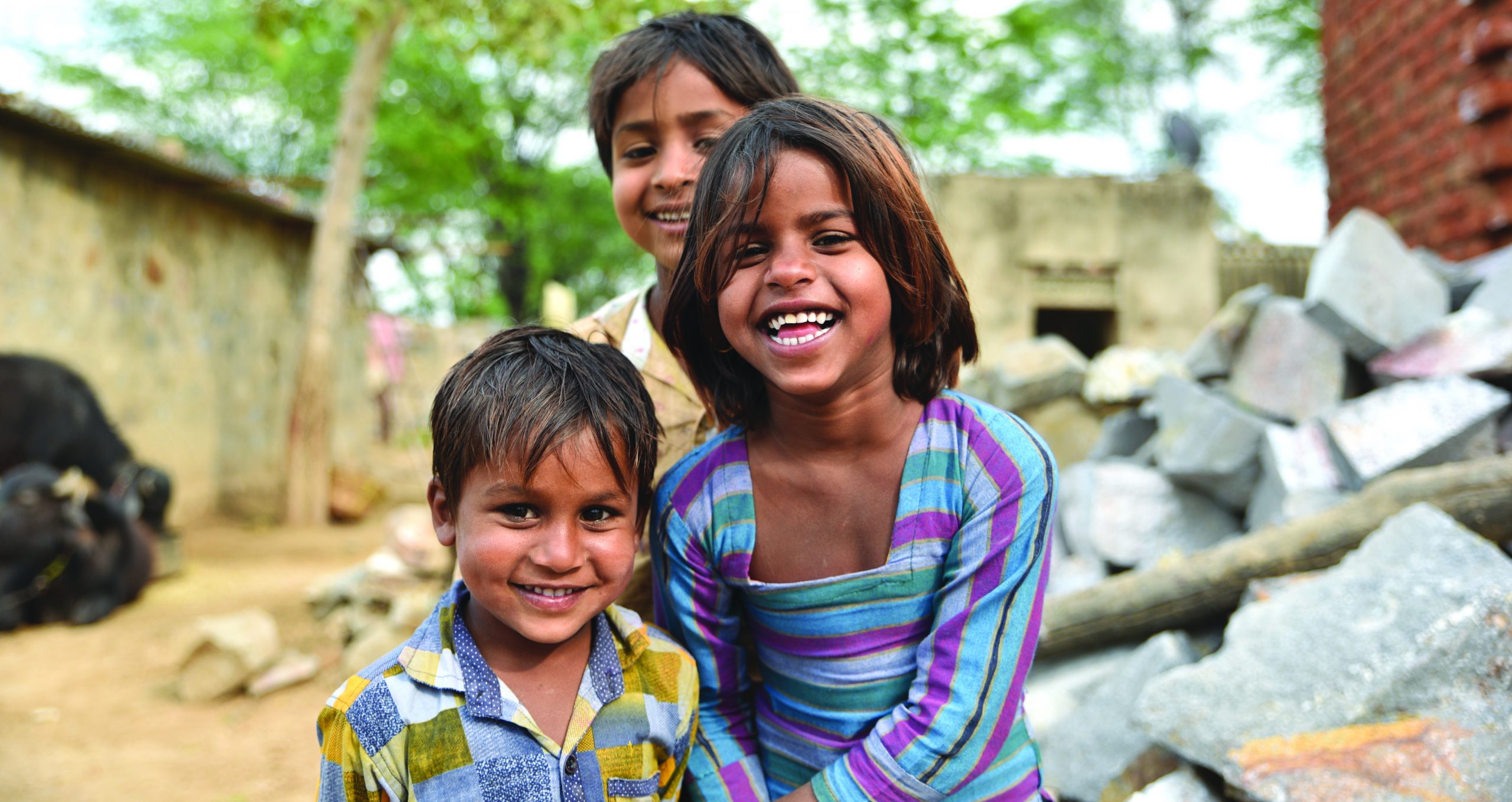
Out of school children: foundational stage education made compulsory
Early childhood care and education
For the high priority accorded to early childhood care and education (ECCE), EducationWorld can claim substantial credit. Since 2010, EducationWorld (estb.1999) has convened 11 annual national ECCE conferences and initiated the unprecedented annual EW India Preschool Rankings, forcing ECCE on to the national development agenda. In its draft NEP report, the T.S.R. Subramanian Committee for the first time publicly acknowledged that “pre-primary education has been a neglected area in the education sector”. It recommended that “pre-school education for children in the 4-5 years age group should be declared as a right and a programme for it to be implemented immediately” with provision for “appropriate funding”.
Its successor, the KR Committee’s NEP Report went one better. It not only acknowledged the vital importance of foundational professionally administered ECCE for India’s youngest children, but recommended reconfiguration of the centuries-old 10+2 primary-secondary schooling system into a new 5+3+3+4 continuum formally integrating ECCE into elementary education.
Achievements (2014-24). The final NEP 2020 accepted the KR committee’s ECCE recommendations in toto. Under NEP 2020, all children are entitled to ‘foundational stage’ education — three years of play-based preschool education followed by two years of preparatory classes until age eight. By incorporation of formal ECCE into the learning continuum, three years of early years education has been added to the 10+2 system, a long overdue reform. Moreover, NEP 2020 directed the National Council of Educational Research & Training (NCERT), Delhi to urgently draw up a national curricular and pedagogical framework for ECCE.
Consequently on October 20, 2022, NCERT released the first-ever National Curriculum Framework for Foundational Stage (NCF-FS) 2022. Child development professionals and educationists welcomed the 360-page NCF-FS 2022 for unambiguously prescribing play-based learning through conversation, stories, toys, music, art and crafts and prohibiting textbooks for children below age six.
Earlier on March 8, the BJP government launched the Saksham Anganwadi and Poshan 2.0 Abhiyaan — integrated nutrition support programmes — for implementation from 2021-22 to 2025-26. Under the programme, nutrition support is provided for children aged six months to six years, pregnant women and lactating mothers, and ECCE to children in the three-six age group. A target to upgrade 200,000 (of the 1.39 million) anganwadis — Central government promoted centres for lactating mothers and new borns which also provide ECCE — has also been set.
Another promising ECCE initiative of the Modi government is the National Initiative for Proficiency in Reading with Understanding and Numeracy (NIPUN) Bharat Mission which has set a target for all children in the three-eight years age group attaining foundational reading and numeracy skills by 2026-27.
Failures (2014-24). The NEP 2020 commitment to universal ECCE has not been followed with sufficient budgetary allocation. The Central government’s allocation for the ICDS (Integrated Child Development Services) programme for the country’s 1.39 million anganwadis is a mere Rs.21,200 crore — Rs.1,263 per child per year (according to the Central Square Foundation, Delhi) — grossly insufficient to provide adequate nutrition let alone professionally administered early childhood education as envisaged by NEP 2020. Moreover the grand Saksham Anganwadi and Poshan 2.0 Abhiyaan programmes have not received additional allocations. Also, no budgetary and policy provision has been made to train and upgrade the skills of the country’s 2.3 million anganwadi workers and helpers to enable them to deliver quality ECCE.
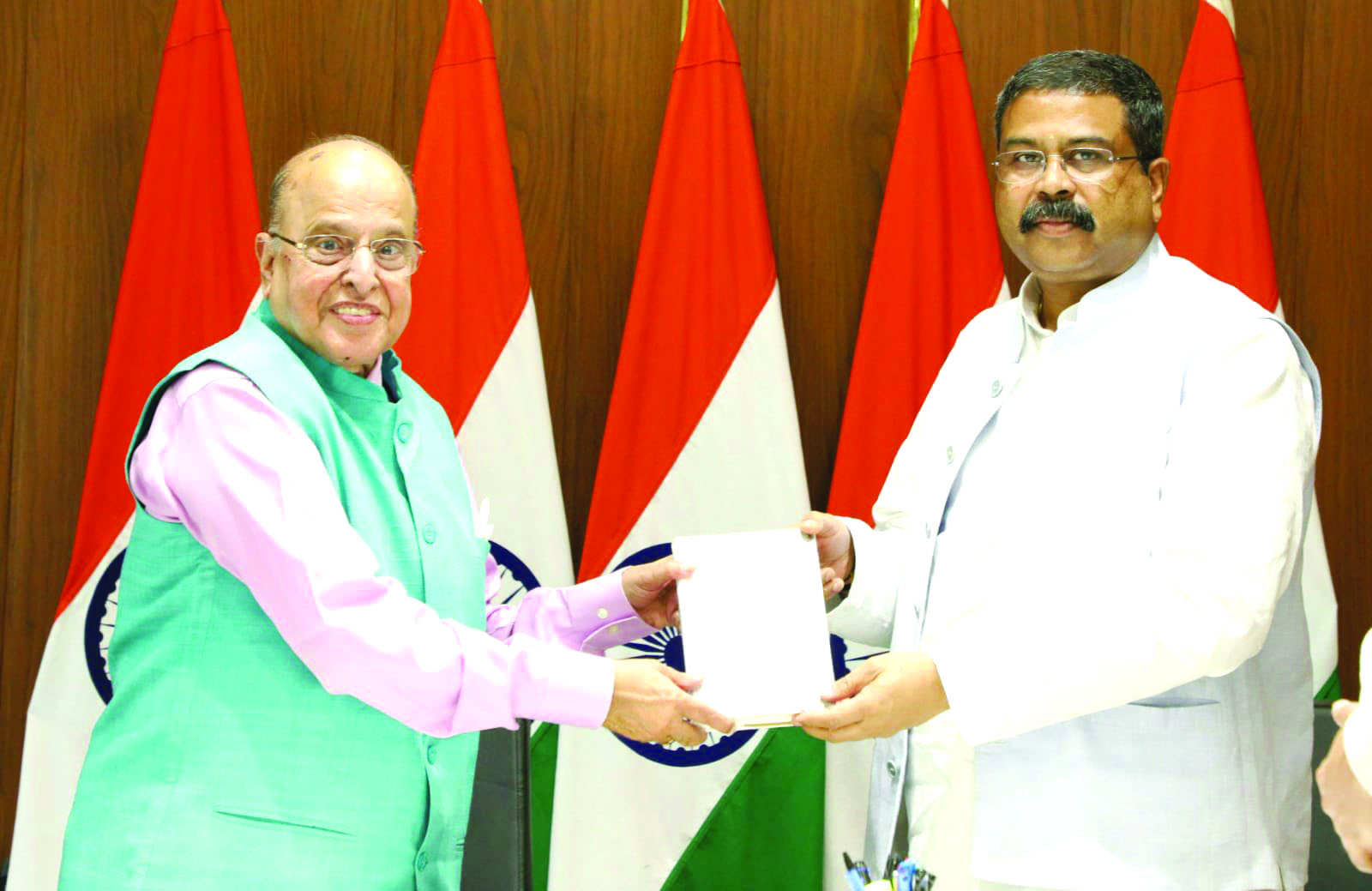
Dr. Kasturirangan (left) presenting NCF-SE 2023 to Union education minister Pradhan
Primary-secondary education
The Modi government’s showpiece NEP 2020 has provided India’s primary-secondary education system an overdue roadmap for curricular and pedagogic reform.
Modi administration’s primary-secondary achievements. Among NEP 2020’s school reform mandates: shift from rote learning to experiential learning pedagogies; compulsory vocational education; exam reforms to test children’s conceptual comprehension, creativity and critical thinking capabilities rather than memory; introduction of continuous formative assessment systems to replace summative exams, and promotion of new digital technologies usage in school education.
To implement these recommendations, last April NCERT released the National Curriculum Framework for School Education (NCF-SE) 2023. The voluminous 600-page NCF-SE has been welcomed by a majority of educators for detailing step-by-step curriculum achievement goals and illustrative learning outcomes for students at every stage — foundational, preparatory, middle and secondary, as well as diluting rigid boundaries between arts, commerce, and science streams. Moreover, it proposes that the school-leaving class X and class XII board exams are held twice a year to “ensure that students have enough time and opportunity to perform well”. According to the Union education ministry, twice-a-year board exams will be rolled out in 2025-26.
NCF-SE apart, other major K-12 initiatives of the BJP government are scrapping the no-detention policy under the Right to Education Act 2009, which guaranteed promotion from class I-VIII; introduction of a Common University Entrance Test (CUET) for class XII school-leavers for admission into the country’s 56 Central government universities; upgradation of 14,500 existing Central/state government schools into PM SHRI Schools showcasing implementation of NEP 2020, and setting up Atal Tinkering Labs in 8,600 schools countrywide.
 Modi government’s school education lapses. Successful implementation of NCF-SE requires larger budgetary allocations, which have not been made. Government expenditure (Centre plus states) for public education has been stuck in the 2.8-3 percent of GDP rut — way below the 6 percent recommendation made by the Kothari Commission in 1967. NEP 2020 prescribes that the Centre and states allocate 10 percent of annual expenditure for education within ten years. Like its predecessor governments, the BJP government — despite in its 2014 manifesto committing to increase public spending on education to 6 percent of GDP — has failed to deliver this promise. (see graph p.46).
Modi government’s school education lapses. Successful implementation of NCF-SE requires larger budgetary allocations, which have not been made. Government expenditure (Centre plus states) for public education has been stuck in the 2.8-3 percent of GDP rut — way below the 6 percent recommendation made by the Kothari Commission in 1967. NEP 2020 prescribes that the Centre and states allocate 10 percent of annual expenditure for education within ten years. Like its predecessor governments, the BJP government — despite in its 2014 manifesto committing to increase public spending on education to 6 percent of GDP — has failed to deliver this promise. (see graph p.46).
Moreover, revision of school textbooks during the past decade has generated considerable controversy for alleged ‘saffronisation’ of education. NCERT has initiated three rounds of revision in school textbooks over the past ten years. In the last revision in 2022-23, NCERT was heavily criticised for removing references to the Mughal era, India’s caste system, the brief ban of the RSS (Rashtriya Swayamsevak Sangh, the ideological mentor organisation of the BJP) in the early years after independence, and Charles Darwin’s Theory of Evolution.
Additionally, several important milestones in independent India’s political history including the assassination of Mahatma Gandhi, the internal Emergency (1975-76), and the anti-Muslim riots (2002) in BJP-ruled Gujarat state, have also been “tweaked” in textbooks printed by NCERT for Central government and CBSE schools.
The other big disappointment is the Modi government’s conspicuous failure to improve the learning outcomes of children in primary education. Year after year, the Annual Status of Education Report published by the independent Pratham Education Foundation, has been reporting that over half of class V children in primary schools of rural India — which grudgingly hosts 60 percent of the national population — can’t read class II texts or manage simple math sums. The latest ASER 2023 report released on January 17, which field tested 34,375 teens in the 14-18 age group, reveals that 25 percent cannot read a class II level textbook fluently in their regional language.
Likewise, the government’s own National Achievement Survey (NAS) 2021 confirms that learning levels of children are declining. According to NAS 2021, students’ learning outcomes declined as they progressed to higher classes. The national average in five subjects (English, maths, science, social science and the dominant state language) for which they were tested, reduced from 59 percent in class III (in 2015) to 49 percent in class V, 41.9 percent in class VIII and 37.8 percent in class X.
Another disappointment is regulatory reform. NEP 2020 recommends a complex regulatory structure headed by a Department of Education in all states and Union territories and an independent State School Standards Authority (SSSA) for setting standards for basic parameters (safety, security, basic infrastructure, teacher adequacy, financial probity and sound processes of governance). This elaborate governance architecture sits ill at ease with promises of autonomy and self-regulation made in the policy document and raises fears of increased government supervision and micro-management — rather than liberalisation — of primary-secondary education.

Cheerful college students: several NEP 2020 initiatives
Higher education
The higher education sector has been a particular focus of reform/new initiatives of the BJP government during the past ten years.
Achievements (2014-24). Several initiatives have been launched to implement NEP 2020 mandates. They include introduction of the four-year undergraduate programme; a national ABC (academic bank of credits) digital repository to facilitate certified multiple exit and re-entry options; phasing out the system of undergrad colleges obliged to affiliate with a parent university, and notification of regulations permitting foreign universities to establish brick-n-mortar campuses in India. Deakin University, Australia inaugurated its campus in GIFT City, Gujarat in early January becoming the first foreign university with a physical campus in India.
Over the past decade, there’s also been an increase in the promotion of new higher education institutions (HEIs) and capacity expansion. In her Union Budget 2024-25 speech to Parliament, Nirmala Sitharaman revealed that between 2014-24, seven new IITs (Indian Institutes of Technology), 16 IIITs (Indian Institutes of Information Technology), 3,000 ITIs (Industrial Training Institutes), 390 universities, 15 AIIMS and seven IIMs, have been promoted. She also gave the Modi administration credit for increasing female enrolment in higher education by 25 percent in the past decade. Overall, since 2014, the number of students enrolled in HEIs has risen from 34.5 million to 43 million in 2024, she said.
Higher education downsides. NEP 2020 mandates an alphabet soup of new regulators. It decrees establishment of a Higher Education Commission of India (HECI) as “an umbrella institution” with four verticals — National Higher Education Regulatory Council, National Accreditation Council, Higher Education Grants Council and General Education Council. It also recommends selection of individuals of “unimpeachable integrity” to regulate education in a “light but tight manner”. But as a spate of scams including the recent NAAC accreditation scandal indicate, these individuals don’t exist and/or are likely to misuse their power in office. Tight and strangulating government regulation of education — including HEIs — is a continuing bugbear.
Another area of disillusionment is the rising number of faculty vacancies in public HEIs countrywide. Answering a question in Parliament (December 2022), Union education minister Dharmendra Pradhan revealed that 40 percent of teaching posts in IITs, 31 percent in IIMs and 30 percent in Central universities are vacant.
Moreover, the National Research Foundation (NRF), proposed by NEP 2020 to incentivise interdisciplinary research, has not materialised despite being announced in consecutive Union budget speeches from 2019 to 2021. Ditto the HECI Bill is yet to be tabled in Parliament.
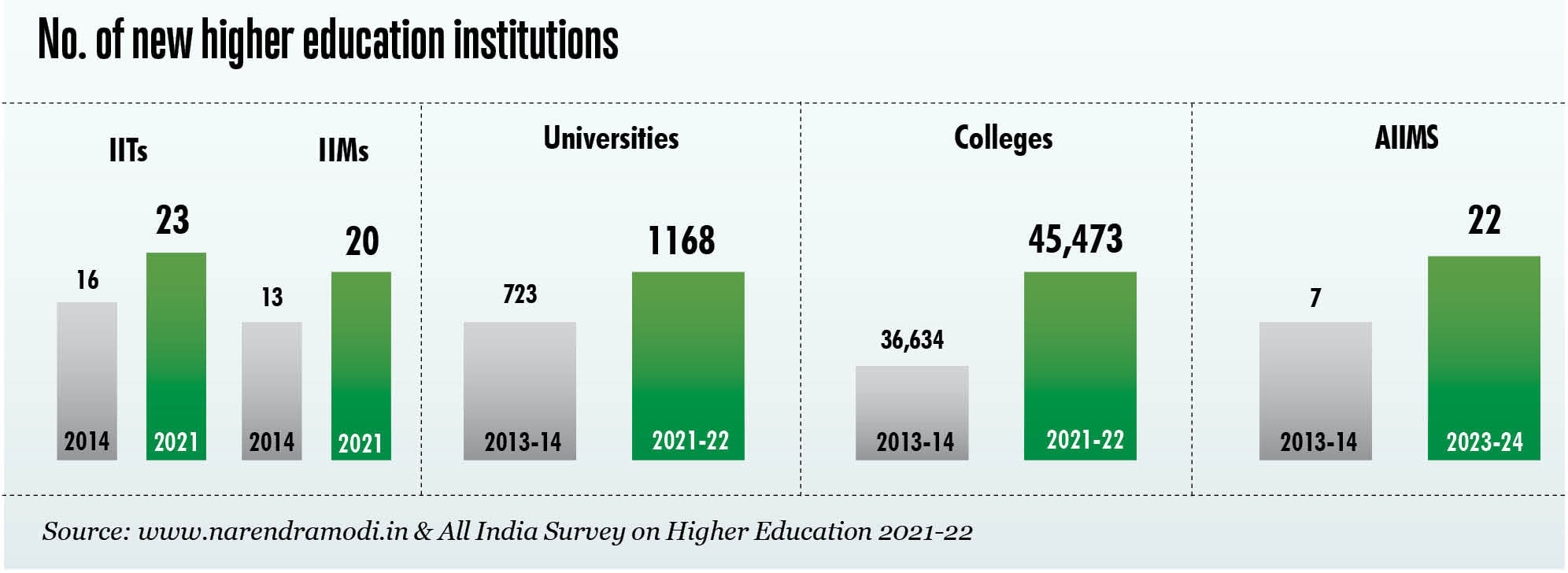 Skills Education
Skills Education
According to PM Modi, “India has the potential to become one of the largest providers of skilled workforce in the world” and his government has taken multiple initiatives to bridge the skills deficit in India.
Modi government’s skills education initiatives (2014-24). In 2015, the government launched the Skill India Mission to focus on skilling, re-skilling, and up-skilling individuals through short-term and long-term training programmes. Under the mission several schemes have been launched including the Pradhan Mantri Kaushal Vikas Yojana, Jan Shikshan Sansthan, National Apprenticeship Promotion Scheme, and Craftsmen Training Scheme through Industrial Training Institutes. As of February 2024, the government claims that the mission has trained 14 million youth, upskilled and reskilled 5.4 million.
Skills education lapses. The India Skills Report 2024 published by Wheebox in association with several agencies including AICTE, CII and Association of Indian Universities, says that 48.75 percent of college/university graduates are unemployable. Another report by TeamLease says that a mere 4.69 percent of the total workforce in India is formally skilled (cf. 24 percent in China, 75 percent in Germany and 96 percent in South Korea). Therefore, the efforts and schemes of the Skill India Mission need to be quadrupled in mission mode.

NEP 2020 a pathbreaking landmark …
A polymath alumnus of Madras, Delhi, Hong Kong, Oxford and Harvard universities, Dr. C. Raj Kumar is founding vice chancellor of the private top-ranked O.P. Jindal Global University, Sonipat, Haryana (JGU, estb.2009).
Are you satisfied with the education record of the past 10 years of the BJP government?
India faces a historic opportunity with an advantageous demographic dividend — 70 percent of its population is below the age of 35. To empower these 1 billion young Indians, the government has focussed on improving access and quality of education. NEP 2020 is a transformative step in this direction. PM Modi’s call for ‘Atmanirbhar Bharat’ and ‘Viksit Bharat@2047’ are direct calls for strengthening India’s higher education landscape and building world-class universities.
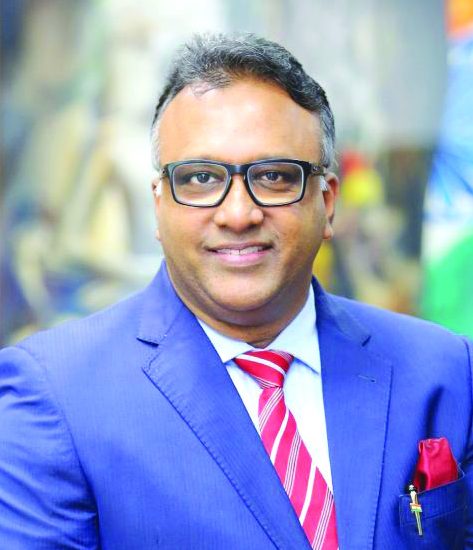 What are the biggest education achievements and failures of the BJP government?
What are the biggest education achievements and failures of the BJP government?
NEP 2020 will go down as a pathbreaking landmark in the annals of Indian higher education. The policy will re-energise the education system by giving impetus to multidisciplinary and liberal education, research, academic freedom, institutional autonomy and regulatory reforms. But time bound implementation of NEP 2020 is critical for attaining its laudable objectives.
What should be the Top 3 education priorities of the new post-2024 government?
NEP implementation. This powerful policy document has the power to propel the dream of Viksit Bharat@2047. But its implementation requires the highest degree of operational governance. Moreover there’s urgent need to create new institutional mechanisms with active participation of all key stakeholders.
Build research-oriented higher education institutions. In the emerging knowledge economy, India needs to build and nourish a research ecosystem to address complex problems of society and embrace technological progress.
Confer greater autonomy to higher education institutions (HEIs). A continuing concern to HEIs is over-regulation by overlapping regulatory bodies. It’s important to reimagine and restructure the entire regulatory framework to provide greater autonomy to HEIs.
Speed & scale reforms
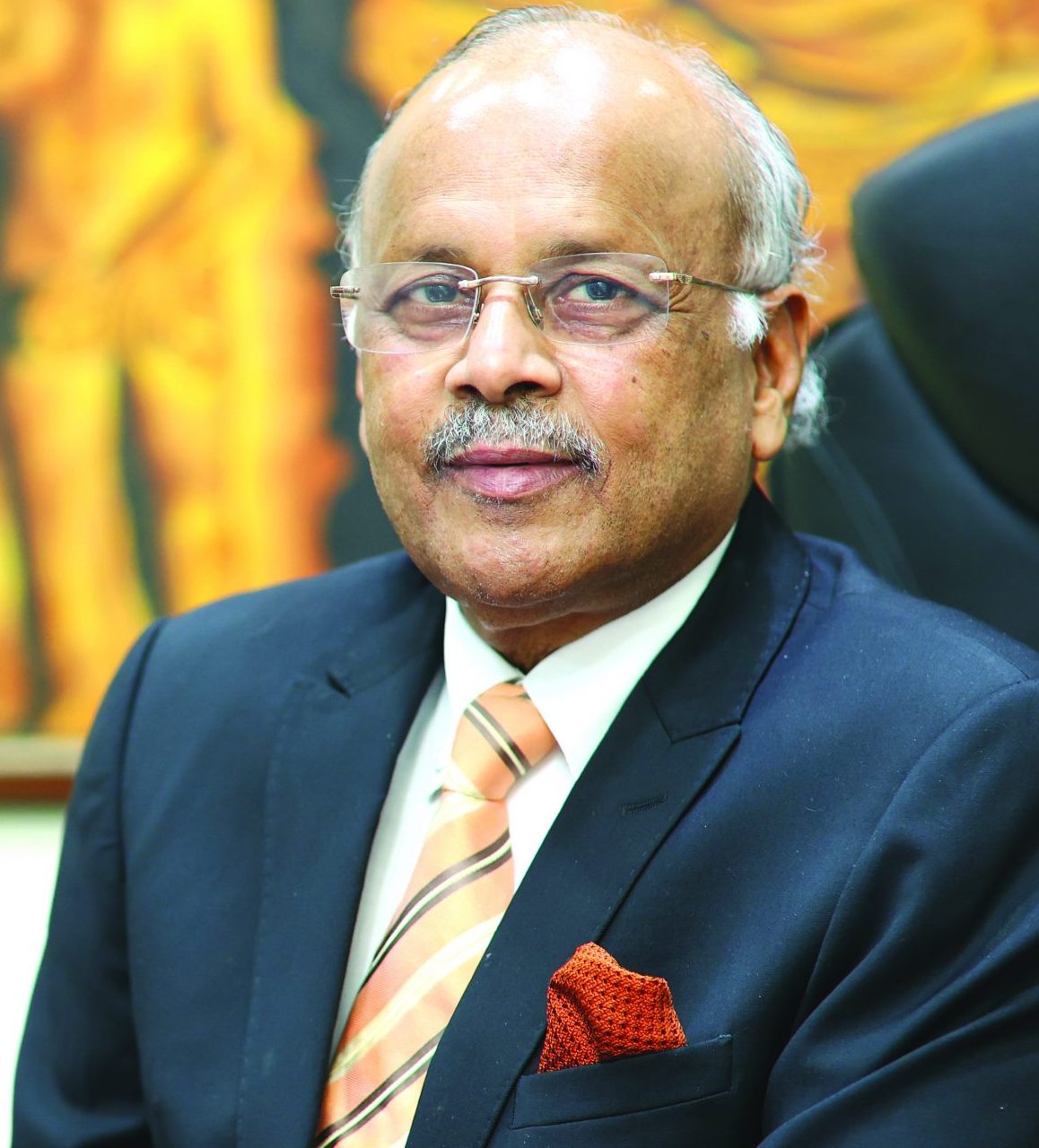 Shishir Jaipuria is Chairman of the Seth Anandram Jaipuria Group of Educational Institutions and also Chairman of FICCI-ARISE (Alliance for Reimagining School Education).
Shishir Jaipuria is Chairman of the Seth Anandram Jaipuria Group of Educational Institutions and also Chairman of FICCI-ARISE (Alliance for Reimagining School Education).
What is your assessment of the government’s efforts to implement reforms and initiatives in school education during the past ten years?
India has been defined by its ambition, aspirations, and eagerness to narrow the gap with developed countries during the past decade. Under the current leadership, the Indian education ecosystem is adapting to evolving trends and seizing opportunities.
A major achievement of the government has been reforms at speed and scale. The visionary NEP 2020 has the potential to generate a seismic shift in K-12 education through a switch to experiential learning, critical thinking, problem solving, professional development of teachers and building a culture of research, creativity and innovation. Another laudable thrust area of the government has been promotion of skill development and vocational training through the Skill India Mission and Pradhan Mantri Kaushal Vikas Yojana.
In school education, a number of key initiatives have been launched such as PM SHRI Schools, National Initiative for Proficiency in Reading with Understanding and Numeracy (NIPUN Bharat), PM e-VIDYA for digital education, NCF for Foundational Stage, NCF for School Education, and NISHTHA (National Initiative for School Heads’ and Teachers’ Holistic Advancement).
Achieving the prime minister’s Viksit Bharat vision requires an education infrastructure and academic ecosystem that facilitates provision of quality education to all children and youth. A flexible regulatory framework is crucial, enabling every education institution to excel in its area of expertise while fostering innovation and ensuring transparency.
What should be the Top 3 education priorities of the new government?
I would rather want to highlight the first 100 days agenda for the new government. My wish list:
- First, prioritise and invest in early childhood care and education and foundational literacy and numeracy (FLN). A PM-led National level Information, Education, Communication (IEC) campaign should be launched to increase national awareness of FLN.
- Second, we need to improve digital infrastructure in schools in mission mode. A national level assessment of K-12 infrastructure needs to be done to improve digital connectivity of schools countrywide. We also need to focus on addressing the problem of teacher shortages and learning gaps of students.
- Third, liberalise private education. There is urgent need for the government to incentivise ‘high-quality’ private education groups to expand capacity. I recommend permitting schools to be set up in the following three structures: government funded/aided; private philanthropy; private for-profit. This is a great way to attract long-term patient capital, generate competition and provide affordable and high-quality education to India’s children.
- Fourth, we need a National Mission on AI (artificial intelligence) for Teachers with an initial government investment of Rs.2,000 crore for training teachers in AI technologies.
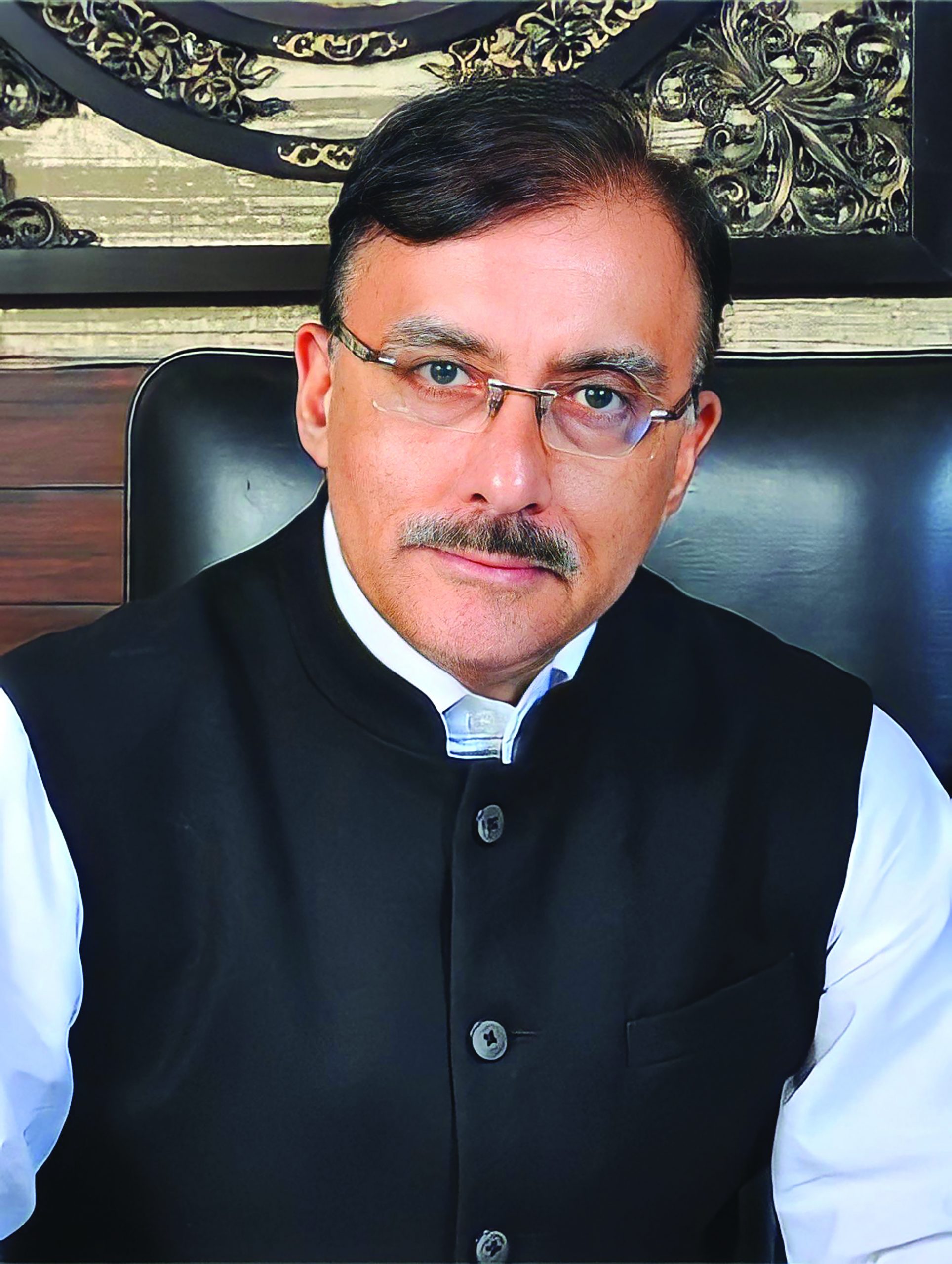 Education brought to forefront
Education brought to forefront
Dr. Deepak Madhok is Chairman of the Varanasi-based Sunbeam Group of Educational Institutions
Are you satisfied with the education record of the past 10 years of the BJP government?
Yes, very. Education has been brought to the forefront of national deliberations with the NEP 2020 and NCF for the Foundational Stage 2022 and NCF for School Education 2023. These documents are new guiding lights for school education. In years to come they will have far-reaching impact resulting in the design and implementation of innovative teaching-learning processes which will improve learning outcomes and prepare our children for the fast-evolving world.
What are the biggest education achievements of the BJP government?
NEP 2020; NCF for the Foundational Stage 2022 and School Education 2023; National Credit Framework and National Institutional Ranking Framework (NIRF). The government has promoted new IITs, IIMs, and AIIMS. Moreover its emphasis on skill development and vocational training is also commendable.
What should be the Top 3 education priorities of the new post-2024 government?
- Better provision for training teachers to attain NEP 2020 goals.
- Implementation of NEP 2020 and the NCFs in their true spirit across the length and breadth of the country.
- Align and sync school education with the higher education system.
 ECCE given high priority
ECCE given high priority
Dr. Swati Popat Vats is founder-president of the Early Childhood Association (ECA, estb.2011), president of Podar Jumbo Kids (PJK) chain, and one of India’s most fervent proponents of universal early childhood care and education (ECCE) for India’s 165 million children below age six.
Are you satisfied with the education record of the past 10 years of the BJP government?
Quite satisfied. As an early childhood advocate and educator, I believe remarkable changes have been introduced in the early childhood care and education (ECCE) sector. NEP 2020 has accorded high priority to ECCE by formally incorporating it into the school system. And for the first time we have a separate curriculum framework for the foundational stage — NCF-FS.
However, since education is a concurrent subject, reforms pertaining to regulation of preschools also have to be implemented by state governments.
What are the biggest education achievements and failures of the past decade?
Among achievements, I would list NEP 2020, NCF for the Foundational Stage 2022 and NCF for School Education 2023; the PARAKH portal which will track the learning of every child from school to college; and reconfiguring of the old 10+2 system to 5+3+3+4 to include five years of foundational stage education — three years of pre-primary and two of primary. Also, the establishment of new IITs, IIMs and AIIMS institutes will augment capacity.
Rather than failures, there’s sluggish movement on the following issues:
- Many states including a few BJP states have still not revised nursery admission age to 3 years in line with NEP 2020.
- Standardised teaching qualifications for ECCE educators have not been prescribed.
- Competitive exams are still putting high pressure on children, often leading to suicide.
What should be the Top 3 education priorities of the new post-2024 government?
- Think innovatively to solve the problem of students’ exam stress. It starts from the top and percolates down to the preschool level. It’s time to rehaul assessment systems for all grades.
- There’s urgent need to set common teacher qualifications for the foundational years across India.
- There can’t be differing government regulations and requirements for preschools in the states. How can teacher qualifications; teacher-pupil ratio; curriculum; fire and transport safety rules; and per sq. ft area required for every child be different in every state? We need a Uniform Code for the Foundational Stage.
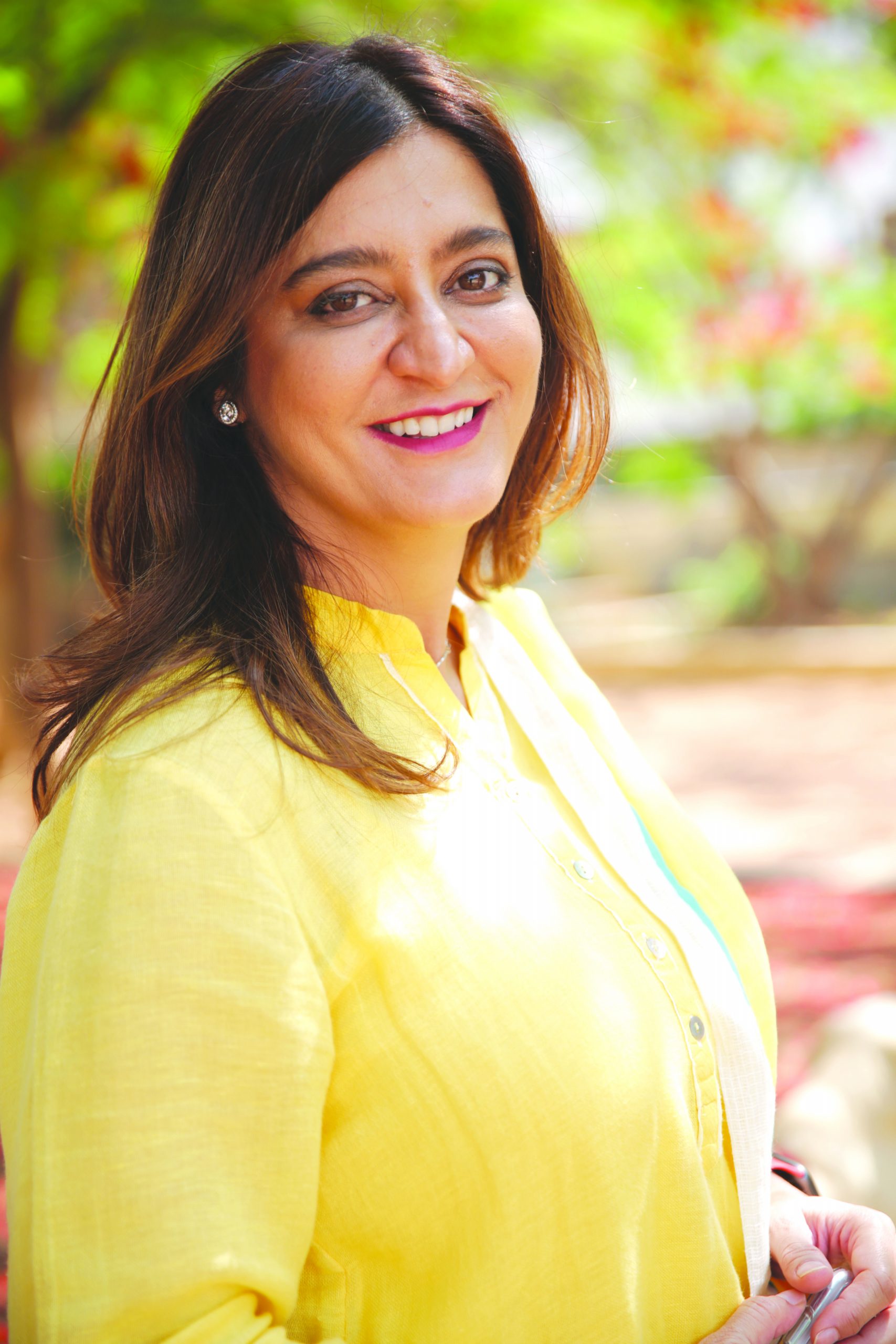 Significant achievements & notable challenges
Significant achievements & notable challenges
Nooraine Fazal is co-founder and managing trustee of the CISCE (Delhi) and Cambridge International (UK)-affiliated Inventure Academy, Whitefield (estb.2005) and Inventure, Yeshwanthpur (estb.2024) — both in Bangalore.
What are the biggest education achievements and failures of the BJP government during the past decade?
Achievements
- Introduction of NEP 2020 is a significant achievement with the potential to transform the education system comprehensively by shifting focus to holistic development, flexible learning, and assessment reforms.
- The establishment of new universities and colleges, including in the North-east and Ladakh, has expanded access to higher education.
- There has been a notable increase in female enrolment — 28 percent — in higher education, signifying progress towards gender equality in education.
- Permission to foreign universities to set up campuses in India has the potential to enhance the quality and diversity of higher education.
- The establishment of a National Testing Agency (NTA) has streamlined national competitive entrance examinations.
Failures
- Despite ambitious targets set by NEP 2020, budgetary allocation for education has remained stagnant, falling well short of the recommended 6 percent of GDP. Indeed, it has decreased from 3.32 percent of GDP in 2019-2020 to 2.50 percent in 2023-24.
- Vacancies in faculty and leadership positions in Central government institutions have affected teaching quality. Nearly 50 institutes of national importance don’t have chairpersons, with ten institutions without a permanent chairperson for eight years.
- Failure to establish key bodies such as the National Research Foundation and the Higher Education Commission of India reflects lack of commitment to systemic reform and innovation.
- NTA has faced criticism for technical glitches, unfair questions and allegations of mismanagement, raising concerns about the reliability and integrity of centralized examinations.
While there have been significant initiatives and achievements in the education sector under the BJP government, there are also notable challenges and areas that require improvement.
What should be the Top 3 education priorities of the new post-2024 government?
Addressing learning loss due to the pandemic. Learning loss of children during the pandemic has been significant. The new government must prioritise initiatives aimed at remedying learning gaps through targeted interventions.
Improving the quality of higher education institutions. Despite expansion of higher education institutions in terms of number, there are concerns regarding the quality and effectiveness of these institutions. The new government should focus on enhancing the quality of higher education by stepping up investment in faculty development, infrastructure upgradation and curriculum modernisation.
Ensure equitable access to quality education. The new government must accord priority to initiatives promoting equitable access to education for all segments of society. This requires improving access to schools and colleges in remote areas, providing financial assistance and scholarships to economically disadvantaged students, and removing barriers to education confronting marginalised groups, including girls, children with disability, and from rural backgrounds.
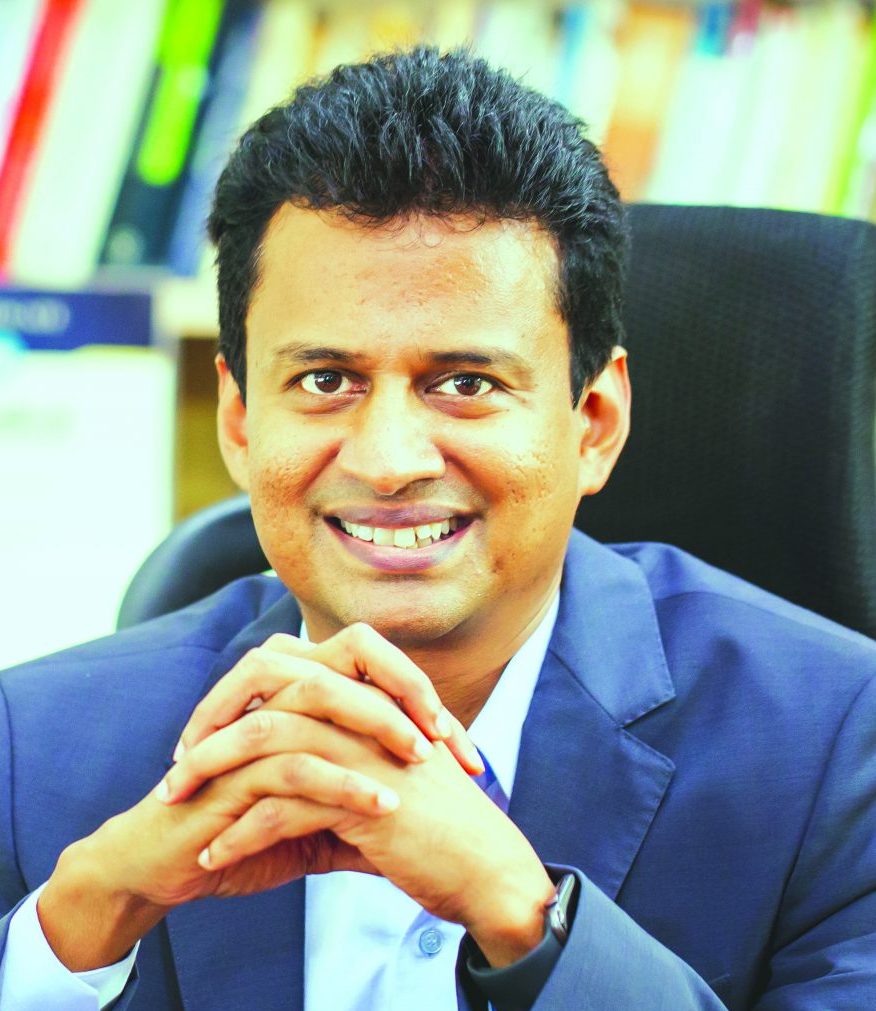 Exciting & promising beginning
Exciting & promising beginning
Praveen Raju is founder-director of the CBSE (Delhi) and Cambridge International (UK)-affiliated Suchitra Academy, Hyderabad (estb.2011), which has over 2,100 children and 230 teachers on its muster rolls.
Education track record of the BJP government. I am inclined to take a favourable view of the past decade because of several pioneering education initiatives. NEP 2020 stands out as a groundbreaking education reform which could revolutionise Indian education with the introduction of new pedagogies that foster critical thinking and creativity among students. But more exciting is the beginning of the deregulation process with the government permitting foreign universities to set up owned campuses in India. I discern a promising future filled with dynamic and diverse education models.
Achievements and failures. The initiative to deregulate the entry of foreign universities into India and permit establishment of for-profit medical colleges are landmark reforms. This will inject necessary capital and diversity into our education system. Similarly, the K-12 education sector urgently requires deregulation and funds infusion. The initial steps are promising, yet achieving the grand vision of India as an education superpower requires sustained and comprehensive effort.
Top 3 education priorities of the new government.
- Deregulate and liberalise school education.
- Invest in digital infrastructure to harness new technologies such as AI in education.
- Motivate the country’s 29 state governments to implement NEP 2020 on a priority basis.
